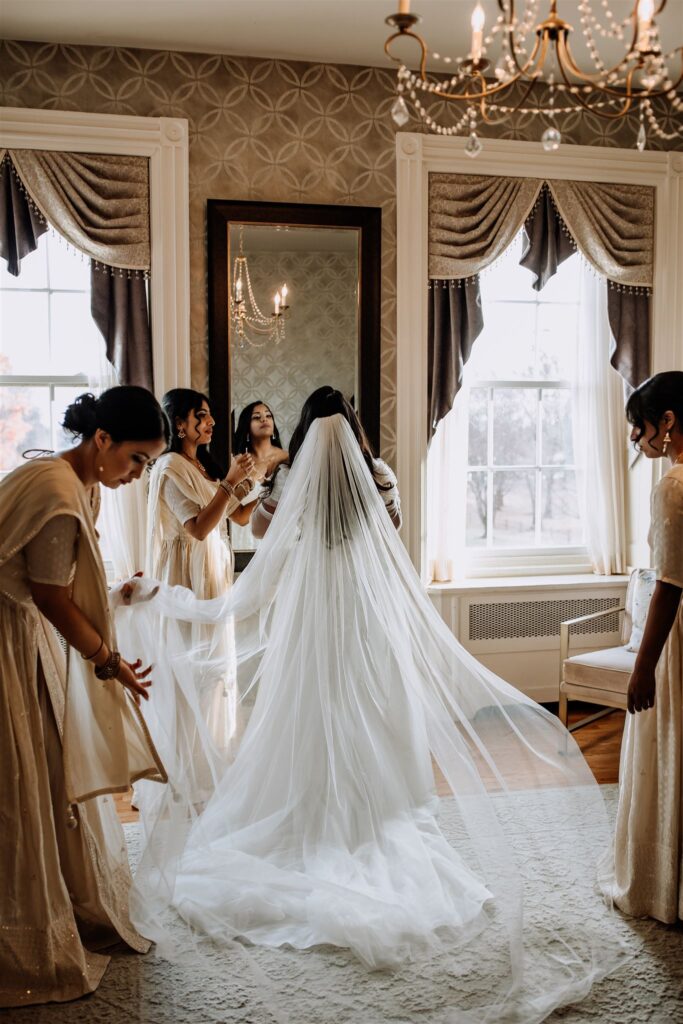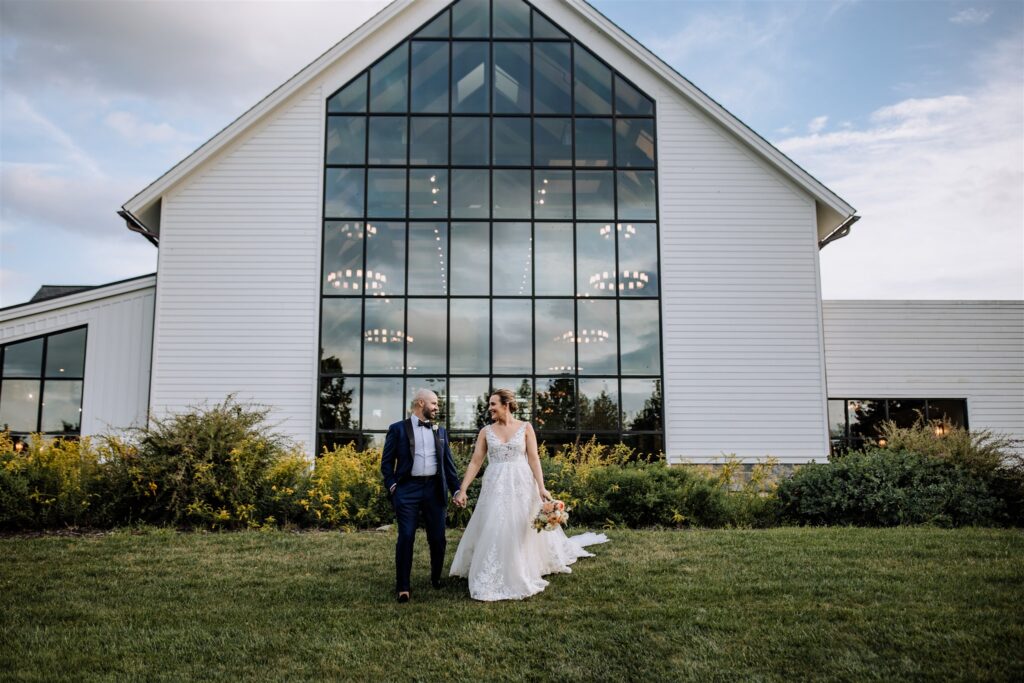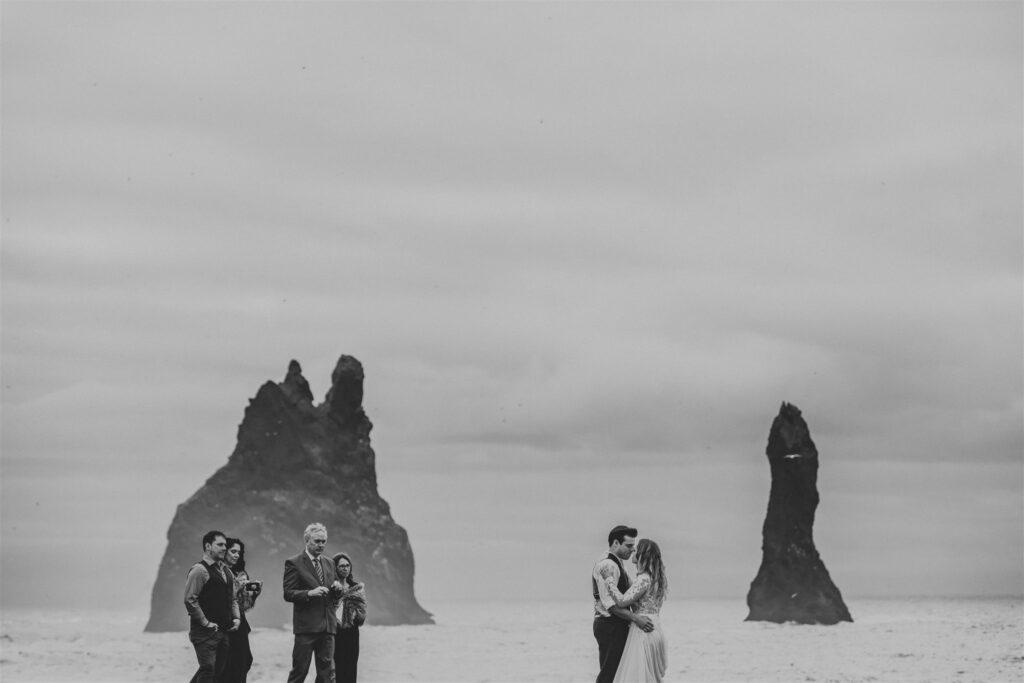We're a team of wedding, elopement and portrait photographers who put community over competition. We provide tips and resources for Photographers looking to up-level their businesses.
We're here to help When you join The Photography Business Academy
How Many Photos Do Wedding Photographers Deliver Their Clients?
Wedding photographers typically deliver between 600 – 1,000 final images to their clients.
Another way to frame this – couples can expect to receive around 100 images per hour of shooting.
So, for a wedding package that includes 8 hours of coverage, a client should have a gallery of around 800 photos.
While every photographer will be a little different, this range is the most common you will find based on self-reported statistics provided by wedding photographers on social media and other sources.
In our experience as wedding photographers, it’s been very common for our own gallery deliveries to look like this as well.
While getting the answer to this question was easy, there’s a lot more that goes into those image counts. Let’s talk about that more next!

10 Tips for Delivering the Best Images to Your Wedding Clients
1). Your delivered images are not all of the photos you took at the wedding.
While you should expect to deliver between 600 – 1,000 final images to your clients, part of your job as a wedding photographer will be to cull through the images and select the best ones that showcase their wedding day in a good light.
Photographers throughout the course of an entire wedding day, from getting ready to the final exit, will typically take thousands of images.
Many of these will be rapid fire duplicates of a single moment, shots with missed focus, images with people blinking or making weird faces, etc. For the sake of our clients, we take these out of the photo set they receive, so they end up with a highly curated set of photos to look back on without any feeling of awkwardness.
If this is the first time you’ve heard about culling images, or you’re struggling to get good at it, check out our image culling tutorial here.
2). Galleries should include images that are high priority for your clients.
You should be sure to include photos that were specifically requested by your clients in advance of their wedding day.
The best way to collect this information is either informally through an email (so you have the request in writing) or more formally by having them submit requests in their wedding questionnaire to you.

3). Image quality is the most important, not just quantity.
Many new photographers feel like they have to share as many of the photos they took with their clients. It’s easy to understand why.
You might get caught in thinking traps that sounds like this in your head…
“This is their wedding day! They’d love to have this photo”
Of course, it can sometimes still be hard.
A few rapid-fire ways to identify a low-quality image you may not want to include:
- The image is out of focus
- People in the background or sides of the frame are making weird faces
- There’s no joy or excitement in the photos
- The lighting is really bad or unflattering
- There are better shots in the same sequence
- There are better shots during the same part of the day
4). Delivered images are typically edited
Unless you’re a “shoot and burn” wedding photographer, the images you deliver to your clients will be edited.
How you approach editing will vary.
Some wedding photographers rely heavily on Lightroom presets, which you can create yourself or buy to emulate a certain style. Others only make small modifications. Some photographers (we’d say the minority) do heavy post processing in Photoshop (or a similar program) to really fine tune their images.
We love photo editing, not just because it’s a fun thing to do, but because it is one of the key things that allows you to better brand your wedding photography as something unique and different in the eyes of your clients. Often, the clients who will book you to photograph their wedding will be drawn to your editing style, to make their day look exactly how they envision it in their dreams!
5). Select one image from each group photo
An easy way to cull down your photo gallery is to only include 1 shot from each posed formal. For example, if you take a photo of the bride and her parents – you do not need to include multiple shots with them just looking at the camera.
Exceptions: Absolutely keep photos of the same people when they do something fun (like mom and dad lean in and kiss the bride on the cheek).
6). Do not include unflattering images of your clients
Do not give your clients photos of themselves that are unflattering, since it will only dampen how they view their gallery.
Things to avoid:
- Double chins
- Protruding stomachs
- Blinking
- Close ups with a lot of acne
This can be particularly hard when you have an otherwise great photo, like those with perfect lighting during Golden Hour. Do use your own judgment when culling these as some things may be correctable like removing acne in post processing.

7). Make black and white photos duplicates
Hand select images you will turn into black and white copies to enhance your galleries.
We have had the topic of B&W photos come up on quite a few consult calls with our own clients. To no surprise, they loved hearing that we did some black and white shots.
Many photographers also love black and white simply because it’s easy to make images romantic and dramatic in this style.
One pitfall to avoid is only providing an image in black and white, and not the color copy. If you do this, your client will likely ask you about it (we’ve been there in the early days of our photo businesses). If you are using B&W just to cover up bad lighting, you’d be better off just removing the photo entirely.
8). How you showcase the images to your client matters
Now that you have the actual images sorted, it’s time to deliver.
How you deliver photos to your clients will impact the experience they have with receiving their photos.
Fortunately, there are many good solutions available that makes gallery delivery easy for wedding photographers. A few of these include:
We highly recommend these platforms for photographers wanting to give a better lasting impression.
The best online gallery platforms for photographers will also give you access to valuable tools to increase your sales, such as an integrated online store to sell prints & albums, email marketing, and more.
9). Your final delivery should be in line with your contracted image count
No matter what other photographers do, you should always provide the number of images you are comfortable and confident in. That number should be reflected on your contract as well.
10). Overdeliver when you can
You will have happier clients if you under promise and over deliver.
If you plan to deliver 800 images, let them know clients typically receive 600. This way, when they finally get to see their photos, they’ll notice just how many more moments you captured for them.
It’s an easy way to keep your clients excited about their photo gallery, and more likely to review you and talk about you to their friends!
Conclusion
Now that you’re well equipped with the knowledge that most wedding photographers deliver between 600 and 1,000 images to their clients, you can start to focus on even more important things to run an amazing photography business.
References:

Honesty is a cornerstone of Shoot and Thrive, so we want you to know that some links in this post are affiliate links. This means we may earn a commission if you make a purchase—at no additional cost to you. We only recommend products and services we trust, have used ourselves, or have thoroughly researched based on industry feedback. Our goal is to provide solutions that genuinely help, whether they come from our direct experience or the collective knowledge of the photography community.
As photography business educators, we believe it's important for educators in this industry to be active photographers themselves. The images used throughout this website were taken through our photo studios - Hand and Arrow Photography and Marshall Scott Photography, except for stock images or if otherwise noted.
Turn Your Passion into a Thriving Business
Transform your photography business into a streamlined, profitable venture that gives you more time, freedom, and confidence.
With the Photography Business Academy, you’ll have a step-by-step guide to building the business—and life—you’ve always dreamed of. From branding to marketing, finances to client experience, we’ve got you covered.
Navigation
Shoot and Thrive is an ethically created resource for photographers needing mentorship, coaching, or business education. We believe in creating content that’s easy to digest and retain while incorporating educational best practices, so you gain clarity and confidence as a business owner.